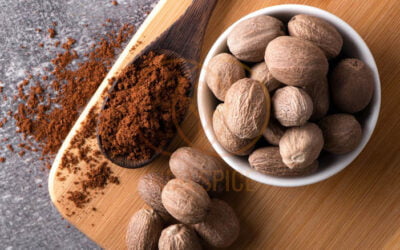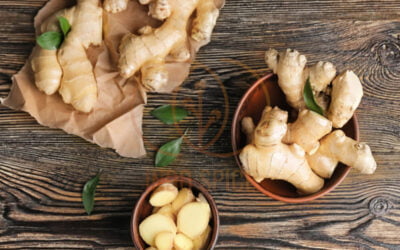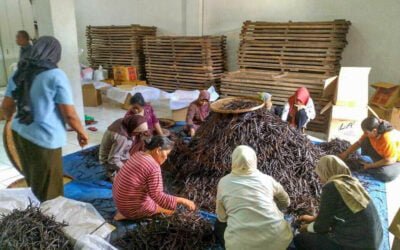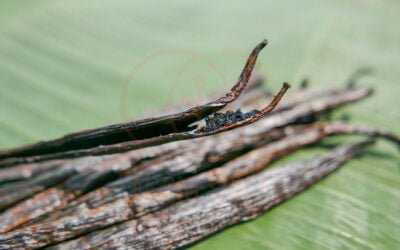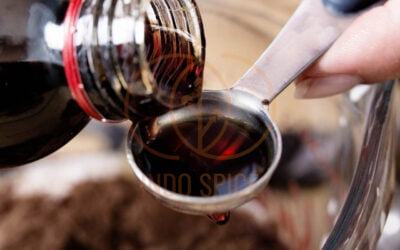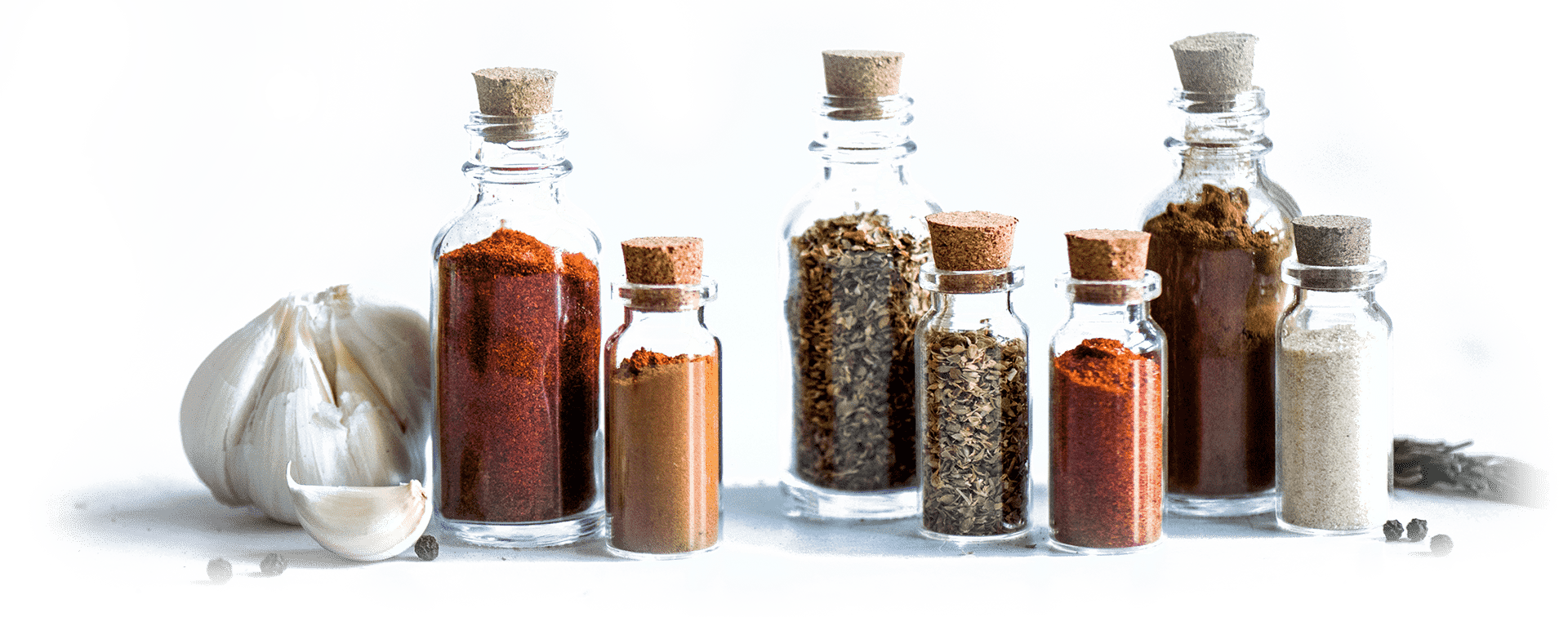Market dynamics, Madagascar’s role, and regulatory measures are pivotal. Carryover stock, uncertain demand, and government policy shape the landscape. Indonesia, Papua New Guinea, and Uganda face challenges and speculation. Amidst oversupply, cautious market actors respond to potential volatility. Stakeholders must prioritize ethical sourcing to avert a downward spiral. As the vanilla market faces uncertainty, sustainability and clear policies are key to stability.
Table of Contents
Reflecting on Market Dynamics
Madagascar: A Ripple Effect
In a perennial pattern, Madagascar continues to assert its supremacy as the premier exporting nation, wielding considerable influence on global vanilla market dynamics.
Contextualizing the Landscape
Amidst mounting market volatility in previous years, the Madagascan government introduced measures to stabilize prices. This led to the establishment of a minimum export price for vanilla beans, which, in 2020, stood at USD 250 per KG, a decline from the preceding year’s value of USD 350 per KG. This incongruity with raw material costs and market demands propelled exporters to circumvent these regulations, evading associated taxes and repatriation duties.
The 2021/2022 season witnessed an estimated export volume exceeding 3,000 MT, a remarkable escalation from the prior year. Besides heightened retail consumption during the Covid-19 pandemic, market demand was artificially augmented by speculative market positions amid geopolitical uncertainty.
A delayed launch of the 2022 season, reinforced regulatory signals, and stringent enforcement of price controls all contributed to a substantial dip in exports since November. Concurrently, global demand exhibited a noticeable deceleration, exacerbated by a surplus of vines in Madagascar.
Responding to burgeoning local stocks and discontent among farmers, the government enacted a decree in May, ostensibly raising the minimum export price with certain cost-related restrictions. Although designed to invigorate market activity, the decree’s efficacy remains elusive.
Quantitative and Qualitative Aspects
Attributable to robust production and diminished exports, projections for carryover from the 2022 season hover between 1,000 and 1,500 MT locally. As the “green campaign” commenced in Ambanja in late May, the unveiling date in SAVA, which commands 80% of the market, and Analanjirofo remains pending. Local estimations suggest a potential yield of 2,000 MT from the ongoing crop.
Taken together, this implies a prospective opening of exports later this year, with 3,000 to 3,500 MT poised for the Madagascan market. This oversupply aligns with substantial stockpiles in the United States, Europe, and other regions.
Furthermore, scrutiny has revealed that the majority of carryover stock rests with farmers and collectors. Hindered by inadequate equipment for optimal storage, the quality of beans is projected to notably deteriorate. The possibility of mingling these with the new crop in the wholesale market later in the year exacerbates concerns over superior-grade vanilla quality.
Anticipating Further Regulations
Following years of an unpopular minimum export price set at USD 250, incongruous with market realities, the government eventually abolished this floor price. Despite endeavors to stimulate exports, initial success remains elusive, although a comprehensive assessment of export volumes remains pending. With the imminent close of the 2022 season in July 2023, characterized by substantial carryover volumes, dwindling demand, and declining prices, apprehensions akin to the 2003-2004 scenario, where vanilla prices plummeted from USD 500/KG to a meager USD 20/KG, hold merit. This scenario could imperil not only Madagascar but also vanilla-producing nations worldwide.
Emergence of Regulatory Authorities
In conjunction with the “Conseil National de la Vanille” (CNV) or Vanilla National Council, a new regulatory body, the “Comité de la Vanille Malgache” (CVM) or Malagasy Vanilla Committee, has emerged. This signals the CVM’s potential influence over Madagascar’s vanilla market regulations, fueling expectations of new governmental policies by year-end.
Current Landscape and Its Implications
The present climate underscores the coexistence of abundant, affordable vanilla alongside tepid demand. The specter of precipitous price declines looms, heralding dire ramifications across the vanilla supply chain.
Nevertheless, uncertainty persists. The nascent CVM and impending presidential elections introduce ambiguity concerning forthcoming policies. Amid speculation of potential postponement due to fiscal constraints, clarity on the timeline of the “green campaign” inauguration and the minimum green vanilla price remains elusive.
Unraveling Market Reactions
Prominent players in the vanilla sector tread cautiously, grappling with the enigma of forthcoming developments.
Consequently, discernible price erosions already manifest as exporters and buyers brace for further depreciation, buoyed by low demand and surplus stock.
This dichotomy places certain entities in the uncomfortable predicament of holding stock outside Madagascar, bearing the risk of incurring losses.
Conversely, the landscape primes opportunistic speculators for action. Select traders engage in market activity, albeit devoid of tangible holdings, casting aside governmental policies regarding pricing thresholds. New entrants, bereft of historical market insight, embark on short positions for vanilla beans, tendering offers at astoundingly low rates, exacerbating market decline.
Insights from Ground Research
Our intimate engagement with farmers and on-site research in Madagascar illuminates the palpable tension permeating the landscape. The farming community stands at a crossroads, oscillating between desperation and unrest. Much like their peers, they await further governmental communication while grappling with considerable unsold prepared stock from the prior year and an impending green harvest. The impending “green campaign” launch emerges as a pivotal juncture.
Simultaneously, the overseas panorama remains bleak. Major buyers clutch significant stock while prices plummet.
Impending Vanilla Crisis: A Deeper Exploration
As oversupply engulfs principal origins, residual stockpile overseas, and lukewarm demand, the vanilla market faces a period of uncertainty.
The pivotal query remains: How protracted will this endure? Given an array of enigmas—potential Madagascan regulatory shifts, upcoming elections, and tighter food safety regulations in Europe—a definitive prognosis eludes us.
Forging a Sustainable Path Forward
If indeed this scenario unfolds, the market landscape would witness a reshuffling, with incumbents vanishing as new forces emerge. However, the stakes extend far beyond mere market dynamics for those committed to vanilla sustainability. The focus is to uphold supply chain stability, necessitating coherent, enduring governmental policies and ethical sourcing commitments from certified market participants.
In this critical juncture, refraining from passive acquiescence emerges as the prudent approach. Akin to 2021’s Sustainable Vanilla Initiative study that recommended a Living Income Reference Price of 60,000 Ariary (+/- $14) per kg for green vanilla, stakeholders possess the power to set ethical operational benchmarks, exerting influence over prices.
The tantalizing alternative entails permitting rapacious speculators to dictate terms. Such a trajectory would plunge the farming community into destitution, underscoring the urgency of elevating ethical market standards.
Emerging Origins: Challenges and Prospects
Indonesia and Papua New Guinea: A Precarious Path
Indonesia and Papua New Guinea’s role in the vanilla sphere remains enigmatic, plagued by market volatility, speculative actors, and eroded expertise.
Quantifying their exact impact is challenging, given Papua New Guinea’s vanilla production, much of which illegally infiltrates Indonesia, masquerading as Indonesian Vanilla. Public access to export data since 2021 remains scant.
Post the 2016-17 surge, several farmers embarked on cultivating new vanilla crops, resulting in maturing vines. Presently, green beans enter the market prematurely, aiming to avert price decline. Conversely, some farmers delay harvesting, banking on quality enhancement. In Indonesia, this year’s yield is estimated at 200 to 300 MT, signifying considerable output. Nevertheless, a sense of apprehension takes root amidst local farmers and collectors, grappling with faltering demand, surplus stock, and pricing pressure.
Comparable dynamics unfold in Papua New Guinea, with an anticipated harvest of 250 MT. However, a surge in Planifolia vines introduces blending risks with Tahitensis. While the market adopts a “wait and see” stance, localized speculation emerges, fueled by the anticipation—however misguided—of another boom-and-bust cycle.
Uganda: A Rising Star in Flux
Uganda’s vanilla beans are in ascendance, positioned as a viable alternative to Bourbon vanilla in select applications. Increasing demand has attracted more producers, yet challenges persist.
As a result of its unique climate, Uganda enjoys two yearly crops—modest in January and substantial in July. With the absence of governmental priority for vanilla, financial support remains scant. Nonetheless, profitability and growing sales have endeared vanilla cultivation to local farmers. Current production capacity hovers around 300 MT, with growth potential via new vines.
Yet, the current environment is fraught with complexity. Expectations of precipitous green vanilla price drops trigger premature harvesting of immature beans, resulting in suboptimal quality. Calls to maintain the status quo vie with the allure of shifting to alternative crops. Complicating matters, collectors retain extensive unsold stock.
Embracing Uncertainty: Crafting a Sustainable Path
Amidst oversupply, ebbing demand, and evolving regulations, the vanilla market is ensnared in turmoil.
The question echoes: For how long will this persist? Answers remain shrouded in ambiguity—the Madagascan policy shift, pending elections, and stringent European food safety regulations all contribute to a clouded forecast.
Charting a Course for Sustainability
A potential upheaval could redraft the market hierarchy, as seasoned players fade and fresh contenders emerge. Nevertheless, stakeholders aligned with sustainable vanilla endeavors acknowledge a broader imperative. Their mission centers on sustaining supply chain stability, necessitating resolute governmental frameworks and ethical procurement commitments.
In these pivotal junctures, proactive engagement supersedes passive observance. Echoing the Sustainable Vanilla Initiative’s 2021 study that recommended a Living Income Reference Price of 60,000 Ariary (+/- $14) per kg for green vanilla, stakeholders wield the authority to set principled operational benchmarks, thereby influencing prices.
A stark alternative involves ceding control to speculative forces, relegating farming communities to the depths of impoverishment. Urgency underscores the elevation of ethical market norms.


